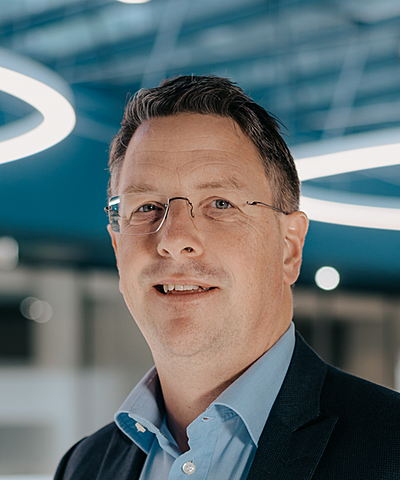Home
/
How can flexibility and profitability be ensured in manufacturing systems for future products?
We consumers have gone from being able to choose between a couple of different brands and products on the store shelf to now expecting an increasingly large selection, preferably personalized to reinforce our identity. In addition, from e-commerce we want delivery in a day or two. How do manufacturers manage to create machines and manufacturing systems that handle all these variations? And in a profitable way?
If you walk around an average grocery store, you are struck by all these shelf meters of similar consumer products in different variants that exist to fulfill our needs (?!). How many unique machines are required to make all of these? How much floor space do they take up? How can a shoe that is manufactured and sold in one copy, after a configuration on the company's website, cost as much as a mass-produced one?
These and many others are questions that we at B&R Adaptive Manufacturing discuss with our customers and partners on a daily basis.
When manufacturing companies choose production equipment, they are required to maintain high productivity, be as low-maintenance as possible, easy to handle and intelligent. Nowadays, customizability has also been added to the list. The products to be manufactured generally have a shorter life cycle and are in demand in significantly more variants than before. Ideally, the equipment should be able to manufacture products that have not yet been developed. Product and production development must go hand in hand to be able to offer the products in time, before competitors, and in sufficient volume.
For the sake of simplicity and to keep up productivity in manufacturing, traditional, sequenced, and rigid systems for product movements are often used, such as round feeding tables, various types of conveyor belts, or other pacing units where you are bound to fixed distances between process stations and equal times that are controlled by the slowest moment. All good so far, the challenge comes when you want to introduce new product variants, increase production or if there is downtime in one of the stations.

With B&R's various Trak- & Levitation-based systems where magnetically levitating and freely controlled "shuttles" are used, we can overcome these challenges. Gone is the need to think about fixed lanes & straight lines, but the layout of the production can be freely adapted to the available floor space, size of process stations and other things. Each product can be given its own recipe and dynamically moved through the manufacturing process. The shuttles can interact virtually in the software to handle products of varied size and shape.
Digitization and reciepe management software are driving the change and enable quick changeovers with the push of a button (or even better directly via ERP) instead of cumbersome and time-consuming mechanical changes of grippers, fixtures or other equipment.
The shuttles in the transport system have unique IDs for full traceability and production history, and when the machines are also equipped with components such as vision cameras, robotic arms, etc. directly integrated into the machine's control system, we open up many possibilities:

The advantages when all these technologies are integrated into and controlled by the same automation platform is that they are configured in a single software, which means that the time for developing the machine or change-over the manufacturing is shortened compared to having to integrate components from different manufacturers via different interfaces. With OPC-UA, the machine is also ready to be inserted into a larger system with minimal effort.

To ensure that the most suitable technology is deployed and in the right scope/layout, different production scenarios are evaluated in a simulation. By changing the layout of the underlying motor segments and moving process stations around, adding shuttles and changing sizes, we can see how production speed changes and OEE improves.
Many applications in various industries can benefit from the advantages of adaptive technologies, imagine friction and maintenance-free movement without moving parts that wear and contaminate production and product, perfect for clean room environments in medical technology (MDA), lab and life science environments, pharmaceuticals, food&bevarage etc. The machines will be able to handle packages and products of varied sizes in one and the same system.
Read more about how B&R can support your company to maintain profitability and reach new markets - B&R – Adaptive Manufacturing


